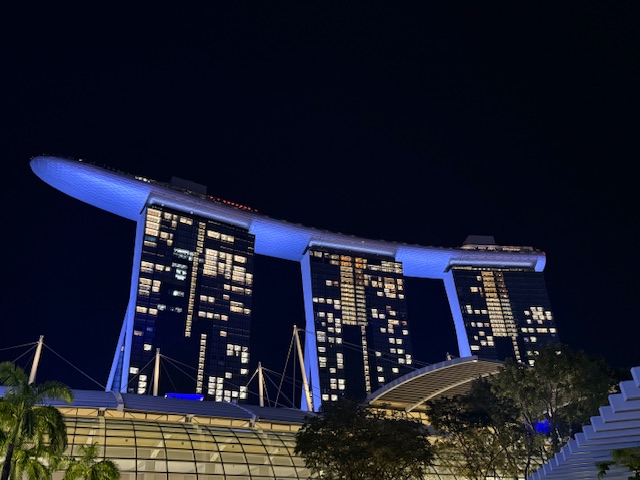
By Robert Waite
I visited an old friend recently in a city relentlessly reinventing itself.
The old friend is the Goodwood Park Hotel, a heritage property with a last-century vibe.
The city is Singapore; an island nation nestled at the southern tip of the Malay
peninsula. Once a sleepy British Empire backwater, today it pulsates with energy and
extravagance, as anyone who saw the film “Crazy Rich Asians” can attest.
Much as Nebuchadnezzar II is credited with transforming ancient Babylon, it was
Singapore’s first post-colonial prime minister, Lee Kuan Yew, who began the process of
modernizing the Lion City.
When it came to the city’s infrastructure, there was seldom a project that failed to get a
green light from Mr. Lee, a strong-willed leader who held power from 1965 until 1990.
Disappearing Act
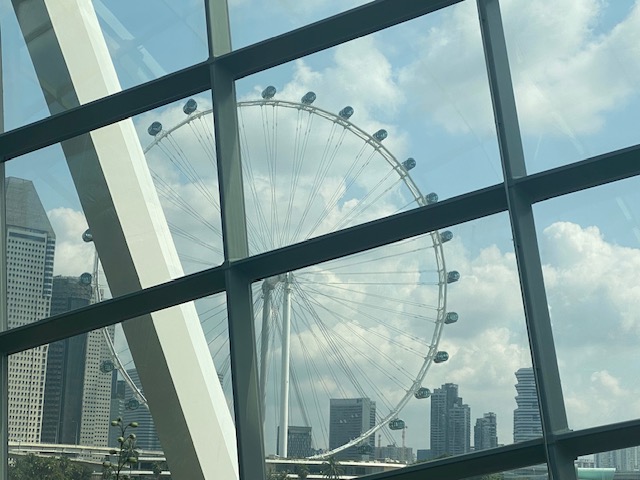
I saw this first-hand. When I first visited in 1981, there was a charming area along the
riverfront not far from Raffles Hotel festooned with colonial-era low-rise warehouses.
When I returned in 1995, I took my brother Tom to see this atmospheric setting – only to
find it in the process of being reconstructed.
It seems the government after 1981 had decided to tear down the colonial structures
and replace them with a long row of mid-rise modern buildings. Returning visitors
complained so vigorously that the government promptly reversed course, tore down the
new buildings, and restored the old ones based on photographs.
They now house trendy restaurants and shops.
As a rule, development here has continued unabated, although more care is taken to
retain the few remaining colonial structures, as well as some of the more picturesque
neighborhoods, like Peranakan Joo Chait.
Kardashian Karma
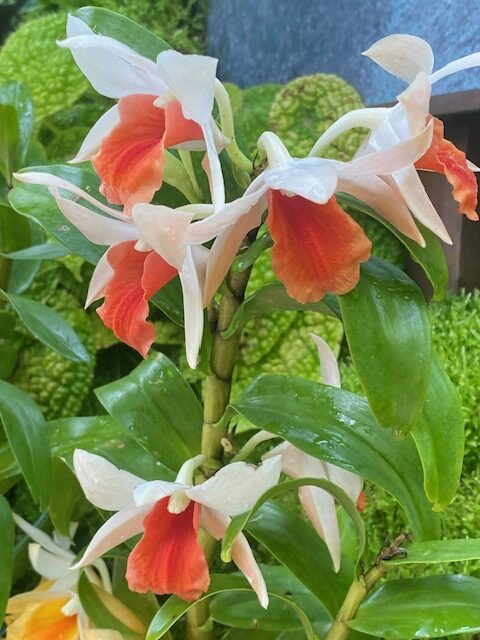
The result is an ultra-modern city with spectacular architecture, wonderful amenities,
and enough conspicuous consumption to embarrass a Kardashian.
This is on immediate show on arrival at the city’s Changi Airport. If you arrive at
Terminal 2, as we did coming from Sri Lanka, you will be met by the spectacular Jewel Changi Waterfall. Located in a retail hanging garden setting, it is the height of a four-story building and, in terms of volume, is purportedly the largest indoor waterfall in the world.
And if that is not enough, there is a newly installed digital display, The Wonderfall. Every
half-hour, a four-minute musical show is screened across its 892-tile screen, with
original music composed by Canadian pianist Jean-Michel Blais.
All this might make you consider just staying at the airport. But more wonders await in the city itself.
A good place to start is Marina Bay Sands and the nearby Gardens by the Bay.
Elongated Spaceship
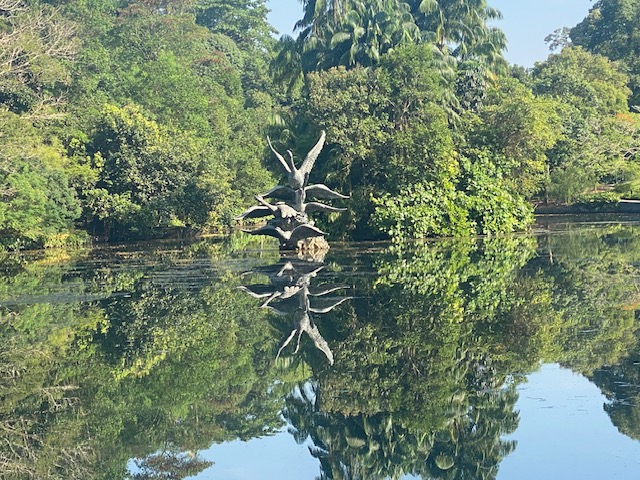
If you watch any reporting from Singapore (CNBC and Bloomberg both base their Asian
market coverage there), you are likely familiar with Marina Bay’s signature structure.
Atop its three towers sits what looks to be an elongated spaceship.
Inside that spaceship are some of the city’s most exclusive venues, including the
Wakuda Bar, which offers spectacular vistas (and some of the most watered-down
martinis on this or any other planet).
While a drink at the sky-high Wakuda is ridiculously overpriced, you can later drown
your sorrows at the free Spectra water show at ground level. This 15-minute
extravaganza features fountains, lasers, and video projections, all backed by an orchestral
soundtrack.
A short distance away is Gardens by the Bay, a complex of indoor and outdoor
botanical displays. Outdoors you will see more than a dozen soaring structures – the
Supertree Grove – serving as vertical gardens. They not only provide needed shade
from the noonday sun, but seven of them generate solar power needed for the nearby
indoor attractions.
And those indoor attractions are not to be missed.
Guinness Recordholder
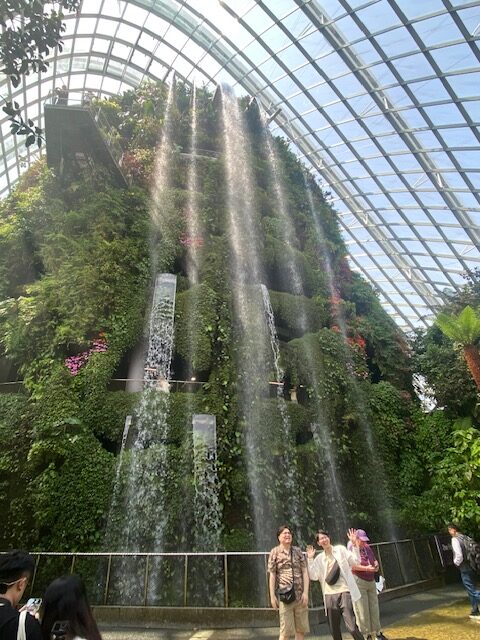
One, the Flower Dome, holds the Guinness World Record for the largest green house.
The other, the Cloud Forest, mimics the tropical climate found between 3.000 and 5,000
feet (quite a feat, considering you are at sea level).
Among other things, the Cloud Forest features a 100-foot-high waterfall, and something
called the Sky Walk, which juts out high above the floor below, creating the illusion that
you are walking on air. While not recommended for those with a fear of heights, it offers
a unique experience.
Taken together, Gardens by the Bay supports more than 225,000 plants from over 800
species.
And if things botanical appeal, closer to the center of town is the more
traditional Singapore Botanical Gardens. Established in 1875, this British-inspired
sanctuary is spread over 200 acres and features the National Orchard Garden, a Ginger
Garden, and an area called Palm Lake, which is surrounded by 200 species of palm
trees.
For those seeking respite from the Singapore sun, there is a smallish, air-
conditioned restaurant on the grounds, Preve, which offers a tasty assortment of light
fare.
Hawker Heaven
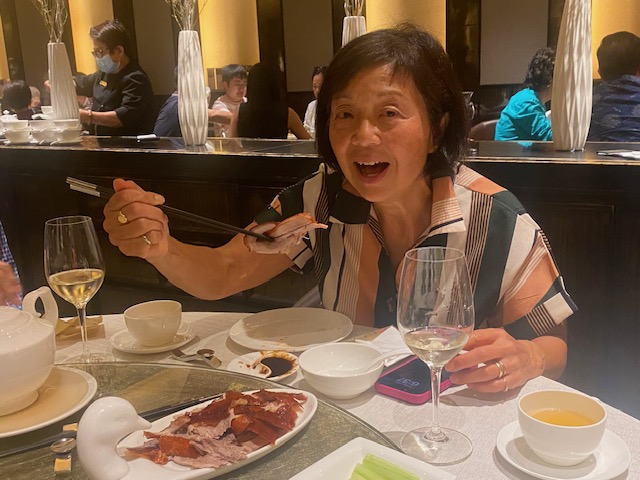
Speaking of food, no visit to Singapore would be complete without a visit to one of their
famous Hawker Centers. As it happened, the one featured in “Crazy Rich Asians,” the
Newton Center, just off Orchard Road, was within walking distance of our hotel.
After securing a table, you can choose among 83 stalls offering all manner of food, from satay and
duck noodles to fried oysters and Heng carrot cake. Take your time and take in the
aromas. You may have to line up to order, but that is part of the charm. Beer and other
drinks are available at separate stands (one even sold tonic water, a personal addiction
in tropical climes).
Singapore offers numerous (51 at latest count) Michelin star restaurants. But for atmosphere and price, the Hawker Centers are hard to beat. And here’s an insider’s tip: while “Crazy Rich Asians” director Jon Chu used the Newton complex in his film, his own favorite spot is the East Coast Lagoon Food Village.
Should you tire of Singapore’s relentless rush to the future, several heritage
sites are worth a visit.
Battle Box Bunker
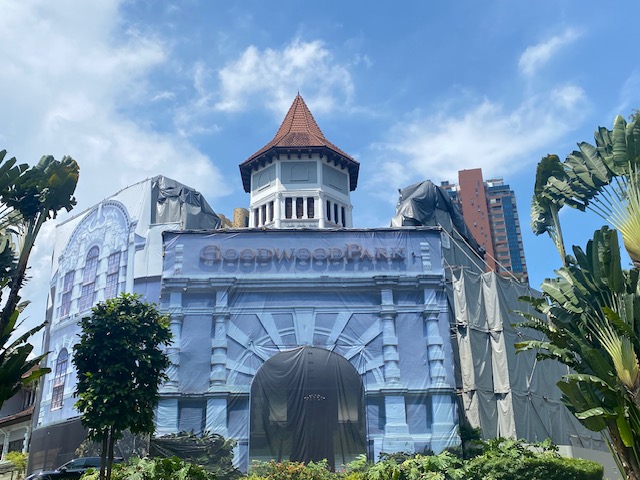
One is Fort Canning, the former British military headquarters.
Here you can descend into the “Battle Box,” the bunkered command center from which British troops were directed as they tried (and failed) to ward off the Japanese. The Japanese commander was actually surprised that the British surrendered, since his own troops were exhausted, outnumbered, and out of supplies.
Other sites worth a look include the newish (2007) Buddha Tooth Relic Temple and the
Colonial District, which includes the National Gallery, St. Andrews Cathedral, and
Raffles Hotel (where you can order a Singapore Sling at the Long Bar).
My own preference for an end of the day libation is to return to Goodwood Park.
Opened in 1900 as The Teutonia Club, it evolved into Goodwood Hall, a kind of event
space, before becoming a hotel in 1929.
The hotel has a storied history, hosting the likes of writers like Roald Dahl and William
Golding; celebrities like Mohammed Ali, Jackie Chan, the pop group Duran Duran,
and Cybill Sheppard; and all manner of Royals. (A darker chapter occurred when the
hotel was occupied by the Japanese High Command during WWII.)
What separates Goodwood from most competitors is that it is family owned and not part
of a chain.
Durian, Durian
“People return here time after time,” said Assistant Front Office Manager Nur Aslam
Ismail. “Our regular guests ask, ‘Is my room available’ and we know which room they
are asking about.”
The other thing that separates the hotel from others is an annual Durian Festival. The
odorous fruit, loved by Queen Victoria but loathed by many, is banned from Singapore
hotel rooms.
“Like everyone else we ban it,” said Ismail, “but during our festival we do sell it. It is our
biggest event of the year.”
I said I would take a pass. But I did wonder if this was why Duran Duran had once
stayed there.
IF YOU GO
GETTING THERE: Singapore Airlines, United Airlines, and Air Canada all have direct
flights to Singapore from North America. Singapore Airlines offers the only non-stop
from New York City –18 hours and 40 minutes on an Airbus 350-900.
ARRIVAL – Complete Singapore Arrival Card two days BEFORE arrival. You can do it online here.
CURRENCY – Singapore dollar. One U.S. dollar equals $1.28 Singapore dollars.
WHERE TO STAY – In addition to the Goodwood Park and Raffles, there are many
excellent hotels offering accommodation, including Four Seasons, Pan Pacific, and
Shangri-la. Airbnb, while technically legal, is prohibited from offering rentals of less than
three months.
DINING – As we had a hankering for duck, the Imperial Treasure Super Peking Duck
restaurant was a great find. At the high end, Les Amis, Odette, and Zen all have three
Michelin stars. But for my money, you can’t beat the Hawker Centers.
TIPPING – Tipping is not expected in Singapore, as a 10% service charge is added to
the bill. But a little extra for exemplary service is appreciated.
UNEXPECTED GEM – The Singapore City Gallery, a museum dedicated to city
planning. It has five galleries, including one with a huge, 3-D model of the ever-
changing city.
LEGAL – Singapore has extremely strong laws regarding drugs, including possession of
marijuana. Special caution: it is against the law to spit in public or chew gum. Spitting
in public brings a S$1,000 fine and importing gum for the purpose of selling it will cost
you S$100,000 and/or a two-year jail term.
Author Bio:
Robert Waite has been writing about travel for more than 50 years. A four-time winner of the New England Newspaper and Press Association’s Best Column Award, Robert is also the author of Ipswich on My Mind and Ipswich Out of My Mind, a compilation of humorous reminiscences about growing up in Massachusetts. The books are available from Amazon as paperbacks or as a Kindle E-book. He and his wife reside in Ottawa, Canada.
All photos by Robert Waite.






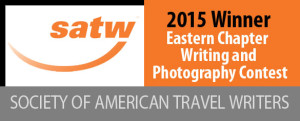
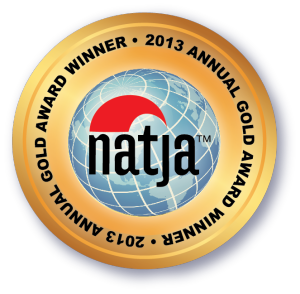


One Response to Singapore: Shimmering Modernity, Touches of the Past